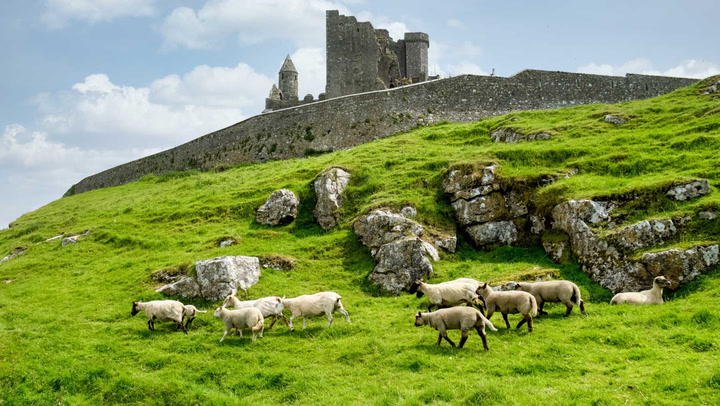Odes to St. Patrick abound throughout Ireland, but few pair the saint’s history and the Emerald Isle’s beauty as splendidly as the 82-mile St. Patrick’s Way. This long-distance pilgrim walk, known as Ireland’s Camino, winds through a jade patchwork of Northern Ireland’s most pristine parks, peaks, and coasts.
Walkers follow St. Patrick’s footsteps for six to 10 days, a journey bookended by Armagh, Ireland’s oldest city, and Downpatrick, the saint’s final resting place. Breathtaking scenery — from the Mourne Mountains, which inspired C.S. Lewis’ fantastical Narnia, to the unspoiled Dundrum Bay — paints the way.
Scenery and History Along St. Patrick’s Way
As a tribute to St. Patrick, Ireland’s Camino has roots in Catholic history, but it’s designed to welcome nature lovers from all walks of life. It starts in Ireland’s spiritual center, Armagh, just 40 miles southeast of Belfast. In this ancient city, points of interest span the St. Patrick’s Church of Ireland Cathedral, the Navan Fort of ancient kings, and lush green apple orchards as far as the eye can see. In fact, St. Patrick even planted an apple tree in this fertile area, nicknamed Orchard County.
The scenery after Armagh moves from rural to industrial, with spots like Scarva and Newry welcoming walkers with cafes, restaurants, hotels, art museums, and wildlife-rich boglands. Leaving Newry, the majestic Mourne Mountains move from distant peaks to imminent reality — but there is one final and peaceful stop before the mountains: Rostrevor.
In this picturesque village, a true remnant of the Edwardian era, trekkers will find quaint 19th-century homes and the enchanting Kilbroney Park — C.S. Lewis’ well-trodden stomping grounds. The author frequented this park, and found his Narnia inspiration on its very trails. Walkers can detour for half-a-mile on Kilbroney’s Narnia Trail to see these lands through Lewis’ eyes.
:max_bytes(150000):strip_icc():format(webp)/slane-county-meath-STPATSWAYIRL0321-a5fa60461f484dd79fbc192e1560a104.jpg)
The fog-fuzzed Mourne Mountains mark the trail’s halfway point. Travelers trudge along meandering foothills near the sea, strolling beneath the Slieve Bearnagh peak before heading into Tollymore Forest Park and the seaside oasis of Newcastle. This final stretch between craggy tidal coastline and the calm inner bay ensures the last days are memorable.
However, few moments along the trail impress like reaching Downpatrick, the route’s final stop. Here, trekkers can fully immerse themselves in the saint’s life and history, from the moment he dragged his boat ashore from the Strangford Lough to his final resting place at Down Cathedral.
Plan Your Trek
The St. Patrick’s Way can be completed solo or with a guide, making it accessible for all types of travelers. Unguided trekkers should pick up a map and Pilgrim’s Passport at the Armagh Visitor Information Centre; walkers can collect stamps at 10 stops along the way, with a completion certificate in Downpatrick. Logistically, signposts mark the way for all 82 miles, and numerous hotel and bed-and-breakfast options abound in each trail town. This free St. Patrick’s Way guide serves as a handy roadmap for additional history and destination background.
Moreover, travelers can hire adventure companies like Footfalls Walking Holidays to organize the details, from trail stops and accommodations to luggage transfers and waterproof maps.
Tighter on time? The St. Patrick Centre in Downpatrick offers shortened tours, all guided by expert Adoration Sisters. Options include the St. Patrick’s Way Camino and Lunch, St. Patrick’s Coastal Camino, and the latest adventurous (and nun-led) offering: the half-day St. Patrick’s Way Camino and Canoe Adventure.




